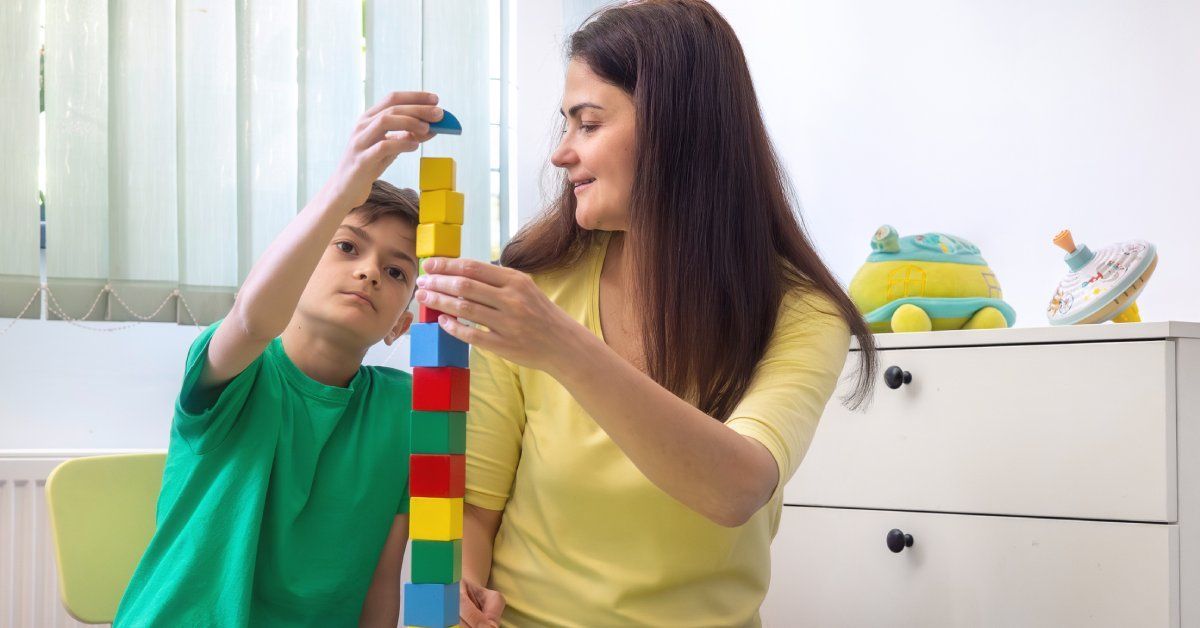Understanding Functional Behavior Assessments in ABA
Applied behavior analysis (ABA) therapy is an evidence-based approach designed to support children with autism. By focusing on individualized interventions, ABA therapy helps children build skills, enhance communication, and develop greater independence. One of the cornerstones of this approach is understanding functional behavior assessments in ABA , a critical process in tailoring treatment to meet a child’s unique needs.
Understanding a child’s behavior is essential for creating effective strategies that address challenging actions while fostering positive growth. This post will explain what an FBA entails, how it’s conducted, and its essential role in developing personalized care plans for children with autism.
What Is a Functional Behavior Assessment (FBA)?
An FBA is a key element of ABA therapy that focuses on understanding the “why” behind specific behaviors. Rather than labeling actions as good or bad, the FBA process views behavior through a compassionate and analytical lens. It seeks to uncover the reasons a child engages in challenging behaviors, whether they stem from communication difficulties, sensory sensitivities, or other underlying needs.
The ultimate goal of an FBA is to gain insights into what a child may be trying to communicate or achieve through their actions. This understanding allows therapists to develop meaningful interventions that address these behaviors, support skill-building, and enhance the child’s daily life. Importantly, FBAs create opportunities to respond to behaviors with empathy rather than discipline, ensuring that a child feels supported.
Why FBAs Matter
FBAs play a pivotal role in setting up a child for long-term success. By understanding the function of a behavior, therapists can design compassionate, personalized strategies that prioritize the child’s well-being. For families, this means navigating daily challenges with tools that foster improved communication, greater emotional regulation, and reduced frustration.
The insights gained from these assessments are not just about addressing individual behaviors. They also contribute to improved family dynamics, making mealtimes, transitions, and outings smoother for everyone involved. Through FBAs, children receive the tailored support they need to thrive, and families gain essential tools to help their loved ones succeed.
How Is a Functional Behavior Assessment Conducted?

FBAs involve collecting detailed information to understand the full context of a child’s behavior. The process typically includes these components.
Data Collection Methods
Therapists begin by gathering information through direct observation, caregiver interviews, and reviewing records or completed questionnaires. Observing the child in different settings, such as at home or at school, helps paint a comprehensive picture of their actions across various environments.
Understanding the ABCs of Behavior
Central to the FBA process is analyzing the ABCs of behavior: antecedent, behavior, and consequence. Therapists look at the antecedent, or what happens immediately before the behavior occurs. Next, they observe the behavior itself, focusing on the specific action the child takes. Finally, they examine the consequence, or what happens right after the behavior.
By studying these elements in sequence, therapists can identify patterns and determine the underlying purpose of a behavior. This approach recognizes that every behavior serves a function, whether the child is trying to gain attention, express discomfort, or avoid a specific situation.
Identifying Patterns and Triggers
Once the ABCs are understood, therapists look for patterns and triggers that may influence behaviors. For example, a child may consistently engage in certain actions to escape loud environments or gain access to a preferred activity. These insights are critical in designing interventions that address the root cause of behaviors effectively.
Creating Supportive, Individualized Interventions
FBAs don’t just explain why a behavior happens; they lay the foundation for meaningful change. With a clearer understanding of a child’s needs, therapists can take action that truly supports growth. The findings of an FBA guide the development of targeted treatment goals and daily interventions. Whether the focus is on reducing frustration or fostering new communication skills, the strategies are tailored to the child’s unique needs.
Consistency is another essential factor. Interventions are designed to be implemented across various settings, including home, school, and therapy sessions, for cohesive support that maximizes their effectiveness.
Interventions may include teaching a child alternative ways to communicate their needs, modifying their environment to prevent triggers, or reinforcing skill-building over time. For instance, a child who struggles to wait for preferred items might learn to use picture cards or verbal cues to express their desires, reducing the likelihood of challenging behaviors.
Beyond Behavior: The Role of Skills and Preference Assessments
FBAs often work hand in hand with skills and preference assessments to create a more holistic understanding of a child’s strengths and motivations. These additional assessments refine treatment plans and foster long-term growth.
Skills Assessments
Therapists use skills assessments to evaluate a child’s abilities in areas such as communication, social interaction, and adaptive skills. By identifying strengths and areas for growth, therapists can build on existing capabilities while introducing new skills. These assessments also ensure that treatment plans consider a child’s immediate needs and long-term development, creating a foundation for greater independence and confidence.
Preference Assessments
Preference assessments focus on identifying what motivates a child, which is essential for fostering engagement and learning. By offering a range of choices and observing responses, therapists can discover what captures a child’s interest. Incorporating these preferences into interventions makes activities more enjoyable and encourages active participation.
The Family’s Role in the FBA Process

Families play a critical role in shaping the success of an FBA. Parents and caregivers provide invaluable insights based on their everyday interactions with the child. Their observations help therapists build a holistic understanding of the child’s behaviors and create meaningful, realistic goals.
Moreover, involving families in the process ensures that interventions align with the child’s daily routines and challenges. This partnership empowers parents to support their child’s progress outside of therapy sessions, creating a collaborative effort that reinforces long-term success.
A Brighter Path Forward
At HANDS Center for Autism, we believe in the power of individualized, outcome-driven care. Our approach combines understanding functional behavior assessments in ABA with skills and preference assessments to create comprehensive care plans tailored to each child’s unique needs.
Our team is dedicated to empowering families and fostering meaningful change through ABA therapy for kids. If you believe your child may benefit from our support, we invite you to reach out to learn more about our services or schedule a consultation.






